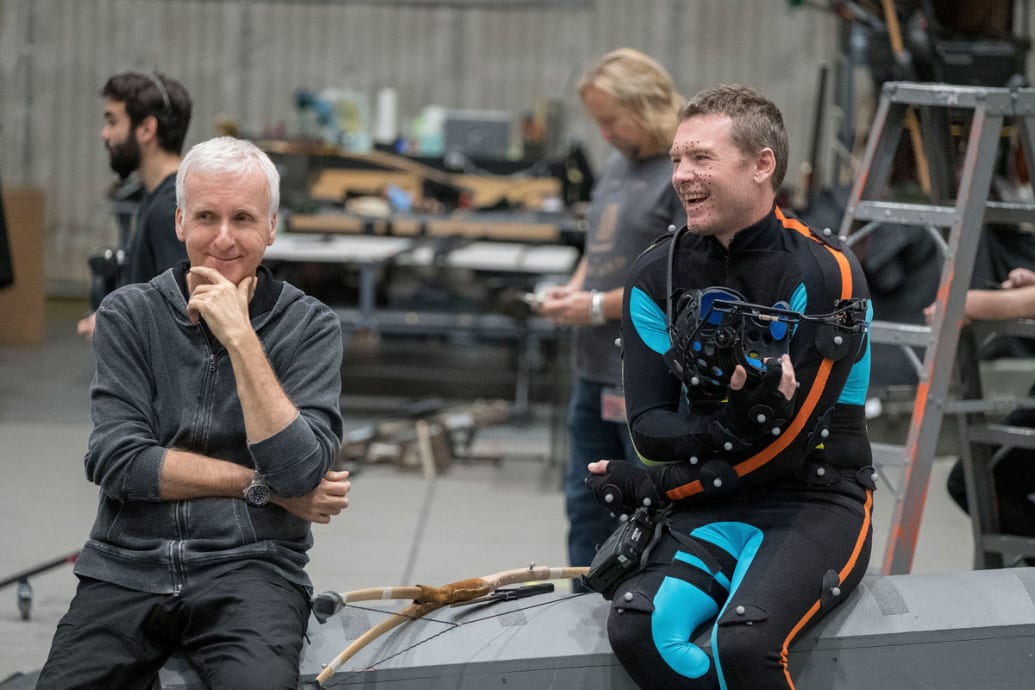As I walked into a musty theater in my hometown to finally watch . (Avatar takes place among the forest Na’vi, while The Way of Water finds Sam Worthington’s Jake Sully and his family fleeing their home to live among an island tribe.)
Its thematic work is as unsubtle and uncomplicated as the original, an ode to spiritualism and interconnectivity that rebukes the inhumane but extremely human temptation to force one’s dominion upon others. We hoot and holler when the Na’vi triumph over their would-be colonizers, and we cringe as the heartless Colonel Miles Quaritch (Stephen Lang) terrorizes the Na’vi and harpoons large, whale-like creatures called the tulkun in his quest to capture and kill Jake Sully.
The teens in this movie are about as are about as two-dimensional (and foolish) as they come, and I wasn’t sure what to do with the fact that all of Jake’s brood seem to have very different regional accents. I just about lost it when I found out that a Na’vi queen from the film was actually Kate Winslet making a very bold accent choice, but then again, this is Avatar—what else did we expect?

Director James Cameron and actor Sam Worthington behind the scenes of 20th Century Studios’ Avatar 2.
Photo by Mark Fellman
In the dozen-odd years since Avatar first debuted, the entertainment industry has made a radical shift toward mega-franchises. Martin Scorsese can’t give an interview anymore without being asked how he feels about Marvel movies, and seemingly every major release is now firmly tethered to pre-existing IP.
As rare as Cameron’s accomplishment was when his first film premiered, The Way of Water—a devoutly weird film based on nothing but its filmmaker’s own imagination, shot on an incomprehensibly large budget—feels downright miraculous. And it actually doesn’t look like shit?! Who would have thought, in this tired age of washed out backdrops, that such a thing was still possible?
Maybe that’s how Avatar: The Way of Water managed to gross $1 billion in just two weeks, in spite of Covid. The real miracle of Avatar is that James Cameron, a filmmaker who gave the world its highest grossing movie with Titanic, decided to cash in all his creative clout to make this—a franchise about blue cat people with a simple, genuinely innocent message.
In both Avatar movies, callous, greed-driven humans ravage entire ecosystems and commit mass slaughter in the name of rare, precious materials—unobtanium (lol) in the first film, and tulkun plasma in the latter. As the Na’vi weep and cry out for any shred of humanity, they remind us that the most rapidly vanishing commodity on our own planet is compassion—a sense of magic that allows us to connect with the world around us and everything in it.
As the cinema first darkened at the start of The Way of Water, in that theater where I’d lost myself in so many fictional worlds, I remembered a magical duel that had taken place during one of those midnight screenings—between a cosplaying Dumbledore and Voldemort ahead of Harry Potter and the Half-Blood Prince. All of us watching at the time flipped with excitement when we spotted a local camera crew.

Jake Sully (Sam Worthington) and Neteyam (Jamie Flatters) in 20th Century Studios’ Avatar: The Way of the Water.
Courtesy of 20th Century Studios
As The Way of Water’s opening sequence began to roll, I remembered my friends and I gleefully reading about the duel in the local paper the next morning. Now, J.K. Rowling has become a warrior for transphobia, and that newspaper has been gutted like so much local media—a corporate cost-saver that’s left no room on its pages for such magic.
Maybe it’s the pandemic, or maybe it’s the feeling that in the dozen years since the first Avatar debuted, the capitalistic destruction it described has managed to conquer even more territory. Whatever it is, The Way of Water hits like a tsunami. Besides, who needs cynicism anymore? Give us one, two, three, or even five more of these—and please, for the love of Eywa, never change the fact that for all the budget, for all the creativity, these movies still rely on that corny font we call Papyrus.
